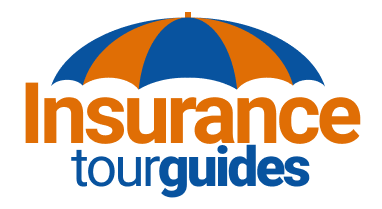Many homeowners believe that their standard homeowners policy protects them from all types of damage, including floods. Unfortunately, that’s one of the most common and costly misunderstandings in the insurance world. Flooding is not covered by traditional homeowners insurance—and with climate change driving more frequent extreme weather, that gap in protection is becoming more important to understand.
Why Flooding Isn’t Covered by Homeowners Insurance
A standard homeowners policy covers “sudden and accidental” water damage, like a burst pipe or an overflowing washing machine. But flooding from natural events—such as heavy rain, storm surge, or melting snow—is excluded. Insurers consider flood risk too widespread and unpredictable to be covered under basic home policies.
That means even a few inches of water in your home can lead to thousands of dollars in uncovered losses. According to the Federal Emergency Management Agency (FEMA), just one inch of floodwater can cause more than $25,000 in damage to a home.
So if you live in an area prone to flooding—or anywhere near a river, coastline, or storm-prone region—you’ll likely need separate flood insurance.
What Flood Insurance Actually Covers
Flood insurance is designed to protect both your home’s structure and your belongings from rising water. You can purchase coverage through the National Flood Insurance Program (NFIP), managed by FEMA, or through a private flood insurer.
| Coverage Type | What’s Included | Typical Coverage Limit (NFIP) |
|---|---|---|
| Building Coverage | Foundation, walls, floors, electrical, plumbing, HVAC, built-in appliances, detached garages | Up to $250,000 |
| Contents Coverage | Furniture, clothing, electronics, personal items, portable appliances | Up to $100,000 |
Private flood insurance providers sometimes offer higher limits or additional benefits, such as temporary living expenses while repairs are made—something the NFIP policy doesn’t include.
Who Needs Flood Insurance?
You might assume flood insurance is only for coastal homes, but that’s not the case. In fact, about one in four flood insurance claims come from homeowners outside high-risk flood zones, according to FEMA.
Consider flood insurance if you:
-
Live near a river, lake, or coastline.
-
Are in a low-lying or storm-prone area.
-
Have a basement or ground-level living area.
-
Live in a region with heavy seasonal rain or snowmelt.
Mortgage lenders require flood insurance for homes located in designated “Special Flood Hazard Areas.” Even if it’s not required, optional coverage can provide peace of mind and financial protection.
NFIP vs. Private Flood Insurance
You have two main options for flood coverage: the National Flood Insurance Program or private insurers. Each has unique benefits and limitations.
| Feature | NFIP | Private Flood Insurance |
|---|---|---|
| Availability | Nationwide (through participating insurers) | Varies by state and provider |
| Coverage Limits | $250,000 (building) + $100,000 (contents) | Often higher (up to millions) |
| Waiting Period | 30 days (standard) | Often shorter (10–15 days) |
| Replacement Cost Coverage | Available for primary residences only | Commonly available |
| Lender Acceptance | Always accepted for federally backed mortgages | Accepted in most cases |
Private policies may also include “additional living expenses” coverage, which pays for hotel or rental costs while your home is being repaired—something not included in NFIP plans.
Estimating the Cost of Flood Insurance
The cost of flood insurance varies depending on your location, elevation, home structure, and coverage limits.
| Risk Zone | Average Annual Premium (NFIP) |
|---|---|
| High-Risk (Zone A or V) | $900–$1,500 |
| Moderate/Low-Risk (Zone B, C, or X) | $400–$700 |
Private flood insurance may be slightly cheaper or more expensive, depending on your property’s risk profile. FEMA’s Risk Rating 2.0 system, introduced in recent years, also adjusts rates more accurately based on individual property characteristics—rather than broad flood maps.
How to Check Your Flood Risk
You can check your property’s flood risk using FEMA’s online Flood Map Service Center, or by asking your insurance agent for a flood zone determination.
When assessing risk, consider both historical data and future risk—climate patterns, development, and infrastructure changes can all affect flood probability over time.
Pro tip: Even if you’re in a low-risk area, flood insurance is surprisingly affordable. Many homeowners in moderate zones pay less than $1 a day for coverage.
Steps to Take Before a Flood
Even with insurance, prevention and preparation are key.
Protect your home and finances by:
-
Keeping important documents in a waterproof container or digital backup.
-
Installing sump pumps and backflow valves.
-
Elevating critical systems like electrical panels and furnaces.
-
Creating a flood emergency plan for your family and pets.
Documentation is crucial. Take photos or videos of your home and belongings before disaster strikes to make the claims process smoother.
Filing a Flood Insurance Claim
If flooding occurs:
-
Contact your insurer immediately. The sooner you report damage, the faster the adjuster can assess it.
-
Document everything. Take detailed photos before cleaning up.
-
Make temporary repairs. Prevent further damage but keep receipts for reimbursement.
-
Meet with your adjuster. Provide an inventory of lost or damaged property.
-
Track all communication. Keep copies of estimates, receipts, and claim forms.
Most claims under the NFIP take several weeks to process, while private insurers may resolve claims faster.
Closing the Coverage Gap
Floods are the most common natural disaster in the United States—and one of the least insured against. Homeowners insurance gives a sense of protection, but without flood coverage, that protection can crumble the moment the water rises.
By understanding the difference between flood and homeowners insurance, you can protect your property, your finances, and your peace of mind. With climate risks increasing, the best time to review your flood protection is before you ever need it.
